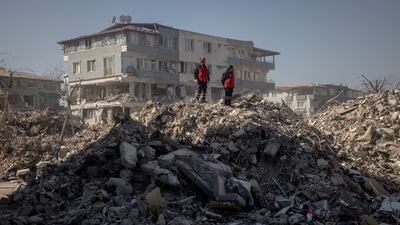The 7.8-magnitude earthquake that hit Turkey in the early hours of Monday morning is not the first to cause devastation in the country.
Much of Turkey lies on fault lines meaning that small and moderate earthquakes are common.
Monday’s quake brought down at least 6,000 buildings across the 10 provinces of Turkey, including hospitals and other public premises. The true scale of the damage and death toll is still being assessed.
But the threat has been well-known for years.
Earthquake researchers say there is a 95 per cent chance that an earthquake of magnitude 7.0 or stronger will strike Istanbul within the next 70 years. Such an event, they warn, would be likely to destroy at least 194,000 buildings and leave at least 10 per cent of the city’s 15 million inhabitants homeless.
Following Turkey’s last major earthquake, which hit Izmir in 1999, killed over 17,000 people, left another 50,000 injured and 500,000 homeless, Recep Tayyip Erdogan, who was then prime minister and is now President, took action.
Turkey's government passed legislation in 2004 mandating that all new construction met modern earthquake-proof standards.
Mr Erdogan made strong construction a political priority after another quake struck the Aegean coast in 2020, killing 114 people.
And yet experts say that the years of rapid, loosely-overseen development since the laws were passed means they may not have been enforced. That is on top of those built before they came into force.
The construction of buildings was also not “really adequate for an area that's susceptible to large earthquakes”, Roger Musson, honorary research associate at the British Geological Survey, told AFP.
Joanna Faure Walker, head of the University College London's Institute for Risk and Disaster Reduction, called for Turkey to check whether the legislation had been adhered to in light of the latest disaster.
She also urged Turkey to review “whether there is the possibility to improve the safety of older buildings”.
Carmen Solana, a volcanologist at the UK's Portsmouth University, said that because earthquakes cannot be predicted, tremor-resistant buildings are crucial in affected areas.
Carmen Solana, a volcanologist at the UK's Portsmouth University, said that because earthquakes cannot be predicted, tremor-resistant buildings are crucial in affected areas.


